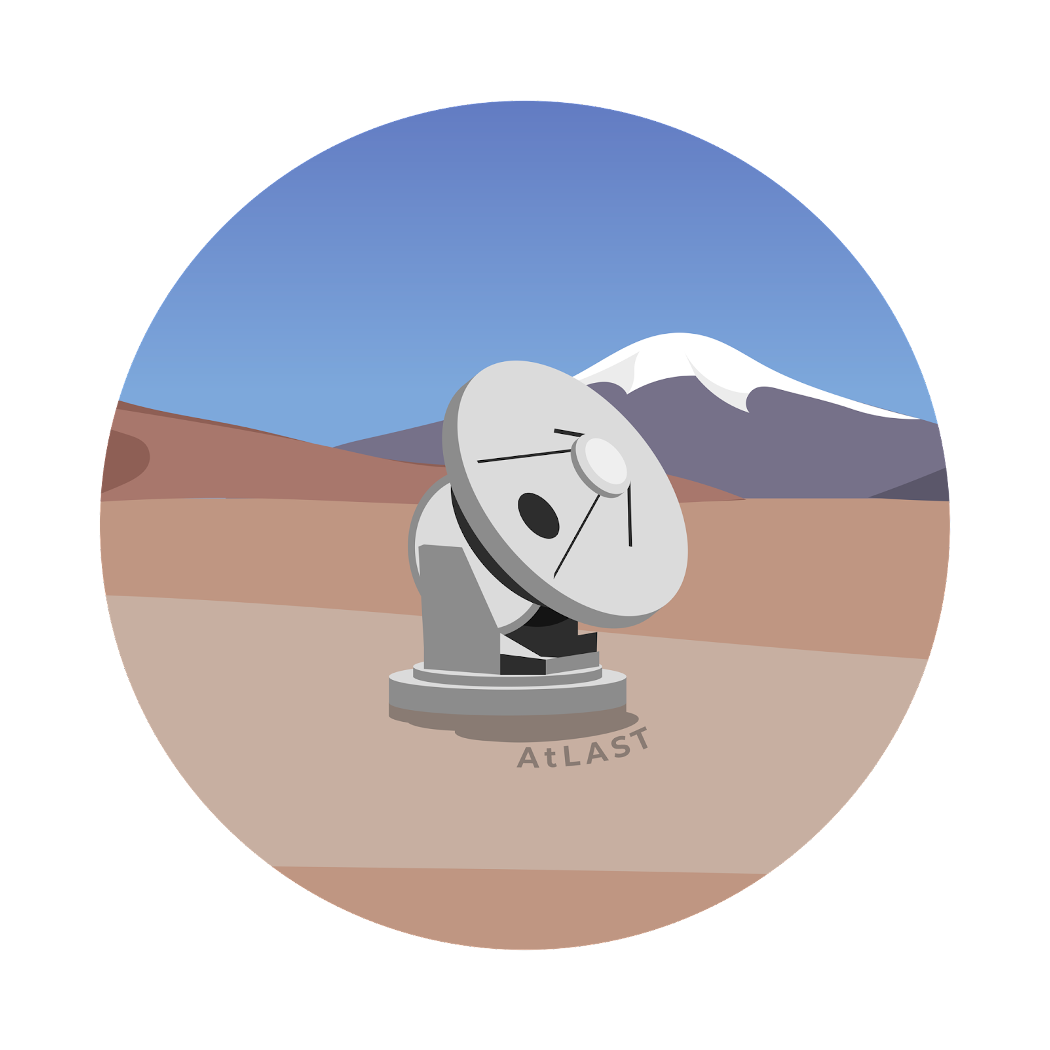Visit the official AtLAST project website at this link.
About the project

Observing the sky at sub-millimeter and millimeter wavelengths unlocks the ability to study the coldest components of the Universe, such as the dense, dusty molecular clouds that provide the raw material for the formation and growth of new stars and planetary systems. This cold material is mostly invisible and obscured at any other wavelength. Furthermore, (sub) mm observations can probe the properties of star formation and of the interstellar and circumgalactic media (ISM and CGM, respectively) across all redshifts, from our own Milky Way, out to the first galaxies that formed in the Universe.
Our goal is to design AtLAST to have a unique combination of large diameter (50-m diameter), wide field of view (goal of 2 degrees diameter), fast mapping speed, high spatial resolution, and sensitivity to large-scale structures. These technical characteristics will enable discoveries that are not possible with any other current or planned astronomical facility, by giving us an unprecedented view of the (sub) mm sky, from Solar System objects and the Sun, to the stars and planets forming in our own Galaxy, and out to individual galaxies, galaxy clusters, and large-scale gaseous structures across the Universe.
Research goals
The main objectives of AtLAST are:
- Produce a comprehensive design study for AtLAST
- Refine the key scientific drivers and requirements for the telescope and instrumentation, by maintaining a continuous dialogue between the scientific and technical goals of AtLAST
- Complete the site characterisation
- Analyse the development, role, and operations model of AtLAST within the context of current or planned European ground-based observatories, and limit its costs and environmental impact by exploiting existing infrastructures
- Perform a full environmental sustainability study for AtLAST with the goal of exploring strategies to make AtLAST fully powered by renewable energy
- Provide recommendations for the legal entity ant international governance structure of AtLAST
- Finalise the budget for building and operating AtLAST
The ultimate goal of this project is to produce a set of comprehensive reports that will be used as references for the final design, construction, and operation of the AtLAST observatory, a research infrastructure of clear strategic importance for Europe.

Outcomes
This study will provide precise guidelines for an optimal and efficient implementation of AtLAST, ensuring that the design of the observatory and its operational aspects will be able to meet tomorrow's scientific needs and societal challenges, especially those related to the environmental sustainability of technology and scientific research .
By the end of this three-year project, a comprehensive feasibility study and telescope design that takes into account the technical, operational, and environmental challenges of such an astronomical observatory, and that can serve the scientific drivers of AtLAST.
AtLAST team and partners
The project will be carried by an international consortium of five Partners, each with their expertise.
Financing
This project has received funding from the European Union's Horizon 2020 research and innovation program under grant agreement No. 951815 .